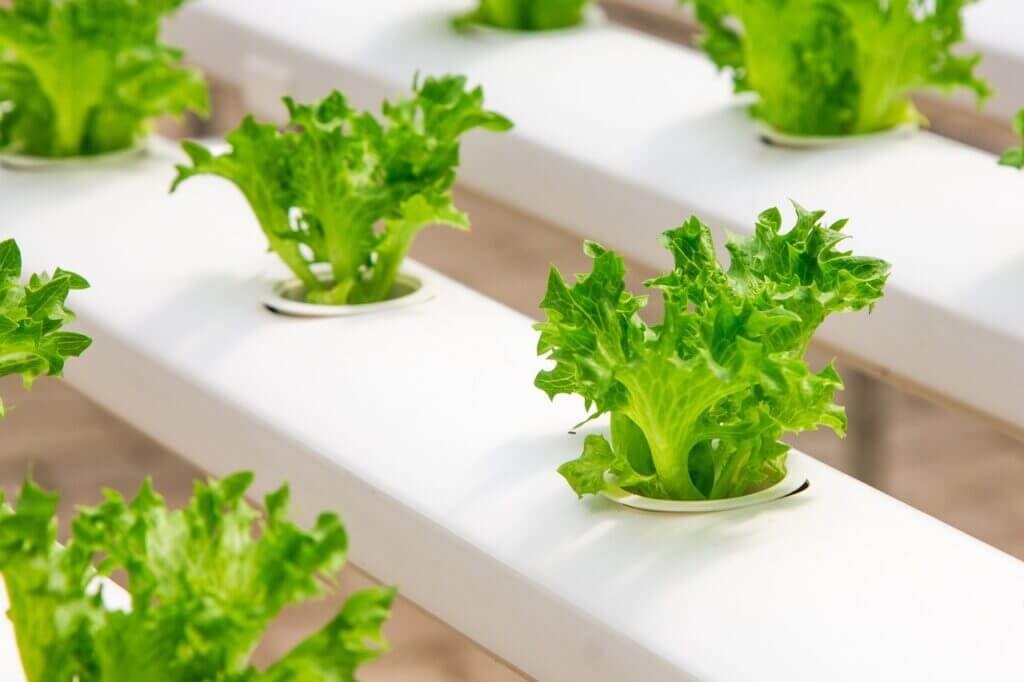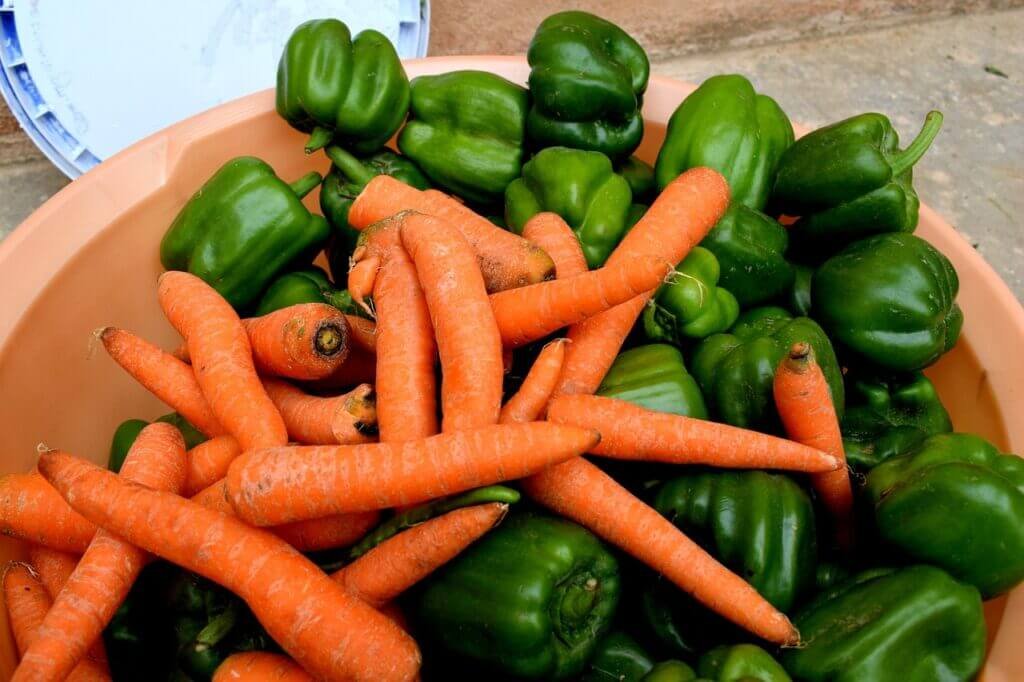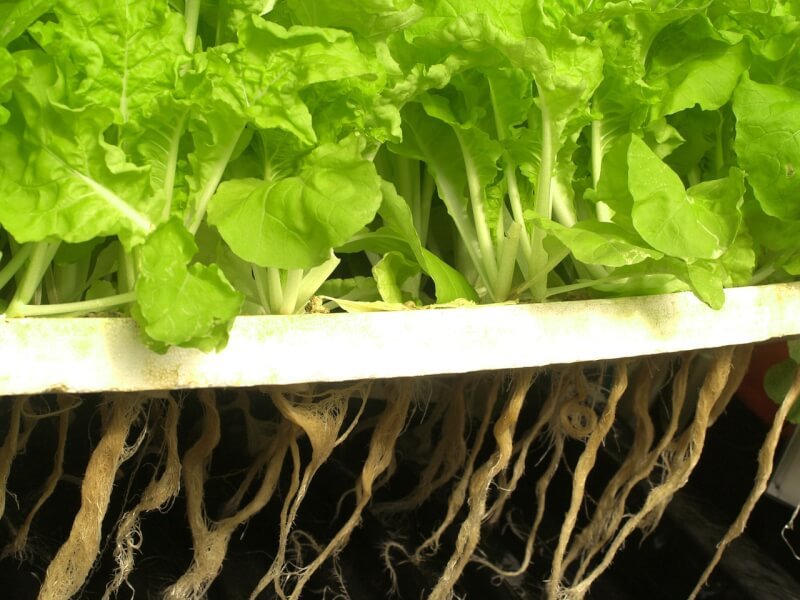Have you ever dreamed of having your own garden, lush with greenery and vibrant flowers, but thought it was impossible because you live in a high-rise building? Well, think again! In this article, we will explore the exciting world of hydroponic gardening and discuss the various options available for creating your very own garden in the sky. From vertical systems to rooftop gardens, there are numerous possibilities to bring the beauty and benefits of nature into your urban living space. So, let’s get started and discover the wonders of high-rise hydroponic gardening!

Vertical hydroponic systems
Vertical hydroponic systems are a great option for creating a hydroponic garden in a high-rise. These systems are designed to maximize space utilization by utilizing vertical space instead of traditional horizontal garden beds. There are several types of vertical hydroponic systems that you can consider for your high-rise hydroponic garden.
Tower systems
Tower systems are one of the most popular types of vertical hydroponic systems. These systems consist of tall vertical towers with multiple planting pockets or channels. The plants are grown in these channels, and nutrient-rich water is continuously circulated through the channels, providing the plants with the necessary nutrients and water. Tower systems are highly efficient in terms of space utilization and can be easily installed in a high-rise building.
Vertical columns
Vertical columns are another type of vertical hydroponic system that can be used in high-rise hydroponic gardens. These systems consist of multiple columns with planting pockets or channels. The plants are grown in these columns, and nutrient-rich water is supplied to the plants through a pump and tubing system. Vertical columns are compact and can be easily installed on a balcony or rooftop, making them an ideal choice for high-rise hydroponics.
Stackable designs
Stackable designs are another option to consider for creating a hydroponic garden in a high-rise. These designs allow you to stack multiple layers of planting pockets or channels on top of each other, effectively utilizing vertical space. Each layer can be independently watered and supplied with nutrients, allowing for easy maintenance and management. Stackable designs are versatile and can be customized according to the available space in your high-rise building.
Window-based hydroponics
If you have limited space in your high-rise building, window-based hydroponics can be a practical and efficient option. These systems are designed to utilize the available natural light and can be easily installed on windowsills, window boxes, or as hanging gardens.
Window boxes
Window boxes are a popular choice for window-based hydroponics. These boxes can be attached to the exterior of your windows and filled with a growing medium and plants. Nutrient-rich water is supplied to the plants through a drip or flood-and-drain system, depending on the specific design. Window boxes allow you to grow a variety of plants, such as herbs, lettuce, and small vegetables, right outside your window.
Hanging gardens
Hanging gardens are another option for window-based hydroponics in a high-rise building. These gardens consist of hanging baskets or containers that are attached to the interior or exterior of your windows. The plants are suspended in these containers, and nutrient-rich water is supplied to the plants through a drip or misting system. Hanging gardens are a great way to maximize vertical space and create a beautiful green display in your high-rise apartment or office.
Windowsill hydroponics
Windowsill hydroponics is a compact and space-efficient option for creating a hydroponic garden in a high-rise. These systems are designed to fit on the windowsill, making use of the limited space available. The plants are grown in small containers or trays filled with a growing medium, and nutrient-rich water is supplied to the plants in a controlled manner. Windowsill hydroponics is perfect for growing herbs, small plants, and even microgreens.

Aeroponics systems
Aeroponics systems offer a unique and efficient way to create a hydroponic garden in a high-rise building. These systems operate by misting the plant roots with a nutrient-rich solution, allowing them to absorb the necessary nutrients while suspended in the air. There are different types of aeroponics systems that you can consider for your high-rise hydroponic garden.
High-pressure aeroponics
High-pressure aeroponics is a type of aeroponic system that uses high-pressure pumps to create a fine mist of nutrient solution. The mist is evenly distributed over the plant roots, providing them with the necessary nutrients. High-pressure aeroponics is considered to be very efficient, as it allows for optimal nutrient absorption and reduces water usage compared to other hydroponic systems.
Low-pressure aeroponics
Low-pressure aeroponics is another type of aeroponic system that is suitable for creating a hydroponic garden in a high-rise. Unlike high-pressure aeroponics, low-pressure aeroponics uses low-pressure misting nozzles to deliver the nutrient solution to the plant roots. This system is more affordable and easier to set up compared to high-pressure aeroponics, making it a popular choice among hydroponic enthusiasts.
Fogponics
Fogponics is a unique type of aeroponic system that operates by creating a fog-like atmosphere around the plant roots. This is achieved by vibrating or atomizing the nutrient solution, which then forms a cloud of fine mist. The plant roots absorb the nutrients from this mist, promoting healthy growth and development. Fogponics is a highly efficient system that requires minimal water usage and provides excellent oxygenation to the plant roots.
Balcony hydroponics
If you have a balcony in your high-rise building, you can utilize this outdoor space to create a hydroponic garden. Balcony hydroponics offers the opportunity to grow a variety of plants and provides a relaxing and enjoyable garden experience.
Drip irrigation systems
Drip irrigation systems are a popular choice for balcony hydroponics. These systems involve delivering a slow and steady supply of nutrient-rich water directly to the plant roots through a network of tubes and emitters. Drip irrigation systems are easy to set up and maintain, and they allow for precise control over the amount of water and nutrients delivered to each plant.
Nutrient film technique
The nutrient film technique (NFT) is another option for creating a hydroponic garden on your balcony. This technique involves creating a thin film or flow of nutrient-rich water that constantly circulates around the plant roots. The plants are placed in troughs or channels, and the nutrient solution flows over the roots, providing them with the necessary nutrients. NFT is a highly efficient hydroponic system that requires minimal water usage and is well-suited for growing leafy greens and herbs.
Dutch buckets
Dutch buckets, also known as Bato buckets, are a popular choice for balcony hydroponics. These buckets are filled with a growing medium, such as perlite or coconut coir, and the plants are placed in individual buckets. Nutrient-rich water is delivered to each bucket through a drip or flood-and-drain system, providing the plants with the necessary water and nutrients. Dutch buckets are versatile and can be used to grow a wide variety of plants, including tomatoes, cucumbers, and peppers.

Roof-based hydroponics
Roof-based hydroponics is a great option for creating a hydroponic garden in a high-rise building. Utilizing the rooftop space can maximize the potential for growing a variety of plants and provide a tranquil green oasis in an urban environment.
Greenhouse hydroponics
Greenhouse hydroponics is a popular choice for roof-based hydroponics. Building a greenhouse on the rooftop allows for controlled environmental conditions, such as temperature and humidity, which can greatly enhance plant growth. Within the greenhouse, various hydroponic systems can be implemented, such as nutrient film technique (NFT), deep water culture (DWC), or vertical towers. Greenhouse hydroponics provides the opportunity to grow a wide range of plants, including fruits, vegetables, and flowers.
Roof garden hydroponics
Roof garden hydroponics involves creating a garden on the rooftop using hydroponic techniques. This can be achieved by installing raised beds or containers filled with a growing medium, and nutrient-rich water is supplied to the plants through a drip or flood-and-drain system. Roof garden hydroponics creates an oasis in the city, providing a space for relaxation and enjoyment while growing a variety of plants.
Floating raft systems
Floating raft systems, also known as deep water culture (DWC), are a suitable option for roof-based hydroponics. In this system, the plants are placed on floating rafts that are positioned on a nutrient-rich water solution. The roots of the plants hang down into the water, absorbing the necessary nutrients. Floating raft systems are simple to set up and maintain, and they are particularly well-suited for growing leafy greens and herbs.
Hydroponic wall gardens
Hydroponic wall gardens are a creative and visually appealing way to create a hydroponic garden in a high-rise building. These gardens utilize vertical space and transform plain walls into green and vibrant displays.
Vertical wall systems
Vertical wall systems are a popular choice for hydroponic wall gardens. These systems use modular panels that are attached to the wall, creating a vertical structure for the plants to grow in. The plants are placed in individual pockets or containers, and a nutrient-rich water solution is delivered to them through a drip or misting system. Vertical wall systems can be customized to fit any wall size and provide a stunning visual display.
Modular panel systems
Modular panel systems, also known as living walls, are another option for hydroponic wall gardens. These systems involve installing a series of panels on the wall, each containing rows of planting pockets or trays. The plants are placed in these pockets or trays, and a nutrient-rich water solution is supplied to them through a network of tubes. Modular panel systems can be easily installed and maintained, and they offer a wide range of design possibilities.
Living art installations
Living art installations combine hydroponics with artistic design, creating a unique and visually appealing feature in a high-rise building. These installations involve creating intricate patterns or designs using plants and hydroponic systems. The plants are grown in specialized modules or containers that are arranged in a specific pattern, creating a living work of art. Living art installations not only provide a stunning visual display but also promote a sense of calm and serenity in a high-rise environment.
Hydroponics with natural light
Utilizing natural light for hydroponics is an eco-friendly and cost-effective way to create a hydroponic garden in a high-rise building. By harnessing the power of sunlight, you can grow healthy and thriving plants without relying solely on artificial lighting.
Sunlight-based hydroponics
Sunlight-based hydroponics involves positioning your hydroponic system near a window or in a location that receives ample sunlight throughout the day. By using natural light as the primary source of illumination, you can save on energy costs and provide your plants with the full spectrum of light they need for optimal growth. Sunlight-based hydroponics is ideal for growing plants that require high light intensity, such as fruiting crops and flowers.
Solar-powered hydroponics
Solar-powered hydroponics takes the concept of utilizing natural light a step further. By integrating solar panels into your hydroponic system, you can generate clean and renewable energy to power the lighting and other components of your hydroponic setup. Solar-powered hydroponics allows for greater flexibility in terms of installation locations, as it eliminates the need for access to an electrical outlet. This eco-friendly approach reduces your carbon footprint and can lead to significant energy savings in the long run.
Light reflectors and artificial lighting
In situations where natural light is limited or not available, the use of light reflectors and artificial lighting can supplement and enhance plant growth in a high-rise hydroponic garden. Light reflectors, such as mirrors or reflective films, can be strategically positioned to redirect natural light onto the plants, maximizing the amount of light they receive. Artificial lighting, such as LED or fluorescent grow lights, can be used to provide additional light in areas with low natural light levels or during periods of darkness. The use of light reflectors and artificial lighting ensures that your plants receive the necessary illumination for healthy growth, regardless of the external light conditions.
Self-contained hydroponic units
Self-contained hydroponic units offer convenience and simplicity for creating a hydroponic garden in a high-rise building. These compact systems incorporate all the necessary components, such as reservoirs, pumps, and lighting, into a single unit, making them easy to set up and maintain.
Hydroponic cabinets
Hydroponic cabinets are self-contained units that are designed to fit in small spaces, such as apartments or offices in high-rise buildings. These cabinets typically consist of multiple shelves or compartments, where plants are grown using a hydroponic system. The cabinets are equipped with built-in lighting, water reservoirs, and pumps, creating a complete and self-sufficient growing environment. Hydroponic cabinets are ideal for growing herbs, leafy greens, and small vegetables, allowing you to enjoy fresh produce year-round.
Hydroponic closets
Hydroponic closets are similar to hydroponic cabinets but provide a larger growing space for a wider variety of plants. These closets are designed with multiple racks or shelves, which can accommodate a larger number of plants. Hydroponic closets are equipped with all the necessary components, such as lighting, ventilation, and watering systems, to create an optimal growing environment. Hydroponic closets provide the flexibility to grow a variety of plants and can be customized to suit your specific needs and preferences.
Hydroponic pods
Hydroponic pods, also known as grow boxes or grow tents, are compact and versatile self-contained hydroponic units. These pods are designed to create a controlled and enclosed environment for plant growth. Hydroponic pods typically consist of a sturdy frame covered with light-reflective material, creating a sealed space where plants can thrive. These pods are equipped with lighting, ventilation, and watering systems to ensure optimal growing conditions. Hydroponic pods can be set up in any available space in your high-rise building, offering convenience and flexibility for indoor gardening.
Community hydroponic gardens
Community hydroponic gardens provide an opportunity for collaboration and shared resources in a high-rise building. These gardens can be established in common areas, such as rooftops, courtyards, or open spaces, where residents can come together to grow plants and share their knowledge and experiences.
Shared rooftop gardens
Shared rooftop gardens are a popular option for community hydroponic gardens in high-rise buildings. These gardens can be established on the rooftop, using raised beds or hydroponic systems, allowing residents to collaborate and grow a variety of plants. Shared rooftop gardens provide a communal space for residents to connect with nature and share the joy of gardening. They also promote sustainability and self-sufficiency by allowing residents to grow their own fresh produce.
Vertical farming co-ops
Vertical farming co-ops are community-based initiatives that aim to integrate hydroponics into high-rise buildings. These co-ops involve multiple residents coming together to create a shared hydroponic farm within the building. The farm can utilize vertical hydroponic systems, such as tower systems or vertical columns, to maximize space utilization. Vertical farming co-ops allow residents to pool their resources, knowledge, and labor to create a productive and sustainable hydroponic garden that benefits everyone involved.
Public hydroponic spaces
Public hydroponic spaces are communal areas within high-rise buildings that are dedicated to hydroponic gardening. These spaces can be designed as indoor gardens or outdoor green spaces, where residents and visitors can engage in hydroponic gardening activities. Public hydroponic spaces provide an opportunity for education, recreation, and relaxation, creating a sense of community and connection among residents. These spaces can be equipped with various hydroponic systems, providing a diverse range of gardening experiences.
Hydroponic technologies for limited spaces
Limited spaces in high-rise buildings don’t have to be a barrier to creating a hydroponic garden. There are several hydroponic technologies and techniques that are specifically designed for cultivating plants in small-scale environments.
Microgreens cultivation
Microgreens cultivation is a popular choice for limited spaces in high-rise buildings. Microgreens are young and tender edible greens that are harvested at an early stage of growth. These greens are packed with nutrients and can be grown in small trays or containers using hydroponic techniques. Microgreens cultivation requires minimal space and has a rapid growth cycle, making it an ideal choice for growing nutritious greens in limited areas.
Herbs and small plant varieties
Growing herbs and small plant varieties is another viable option for limited spaces. Herbs, such as basil, mint, and parsley, have compact growth habits and can be grown in small containers or windowsill systems. Small plant varieties, such as dwarf tomatoes or peppers, are bred specifically for compact growth and can be easily accommodated in limited areas. These plants can be grown using various hydroponic systems, such as vertical columns or drip irrigation, to maximize space utilization.
Small-scale hydroponic systems
Small-scale hydroponic systems are designed specifically for limited spaces in high-rise buildings. These systems are compact and efficient, allowing you to grow a variety of plants in a small area. Small-scale systems, such as tabletop hydroponic systems or countertop gardens, are equipped with all the necessary components, including lighting, water reservoirs, and pumps, in a space-saving design. These systems are easy to set up and maintain, providing an accessible option for hydroponic gardening in limited spaces.
In conclusion, there are numerous options for creating a hydroponic garden in a high-rise building. From vertical hydroponic systems and window-based hydroponics to aeroponics systems and balcony hydroponics, there is a solution to suit every space and preference. Whether you choose to utilize natural light, incorporate self-contained hydroponic units, or establish community hydroponic gardens, hydroponics offers a sustainable and innovative way to enjoy gardening in an urban environment. With the right knowledge and equipment, you can transform your high-rise building into a flourishing oasis of greenery and enjoy the benefits of fresh and nutritious produce all year round.


